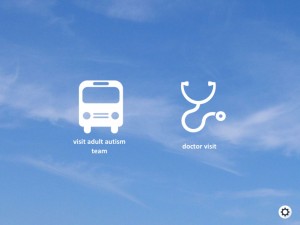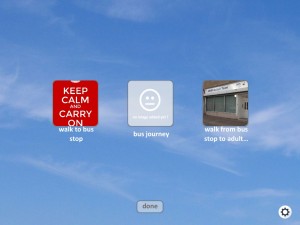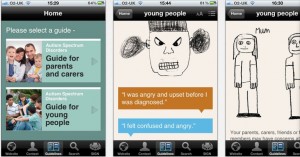App helps children manage their health care routines.
App from Vanderbilt University. This is a free app at the moment but may have a charge in the future. They provide a sample (for children) about visiting the doctor which includes photos of e.g. getting your height and weight taken. Although this app was developed for children It’s generic so you can add your own routines quickly, it’s very simple to use and is good for breaking larger tasks into a sequence of smaller tasks or steps. Here’s some screenshots of an example of my own showing a visit to the autism team, I just used photos but you do have the option to use video instead.
- Choosing a routine



